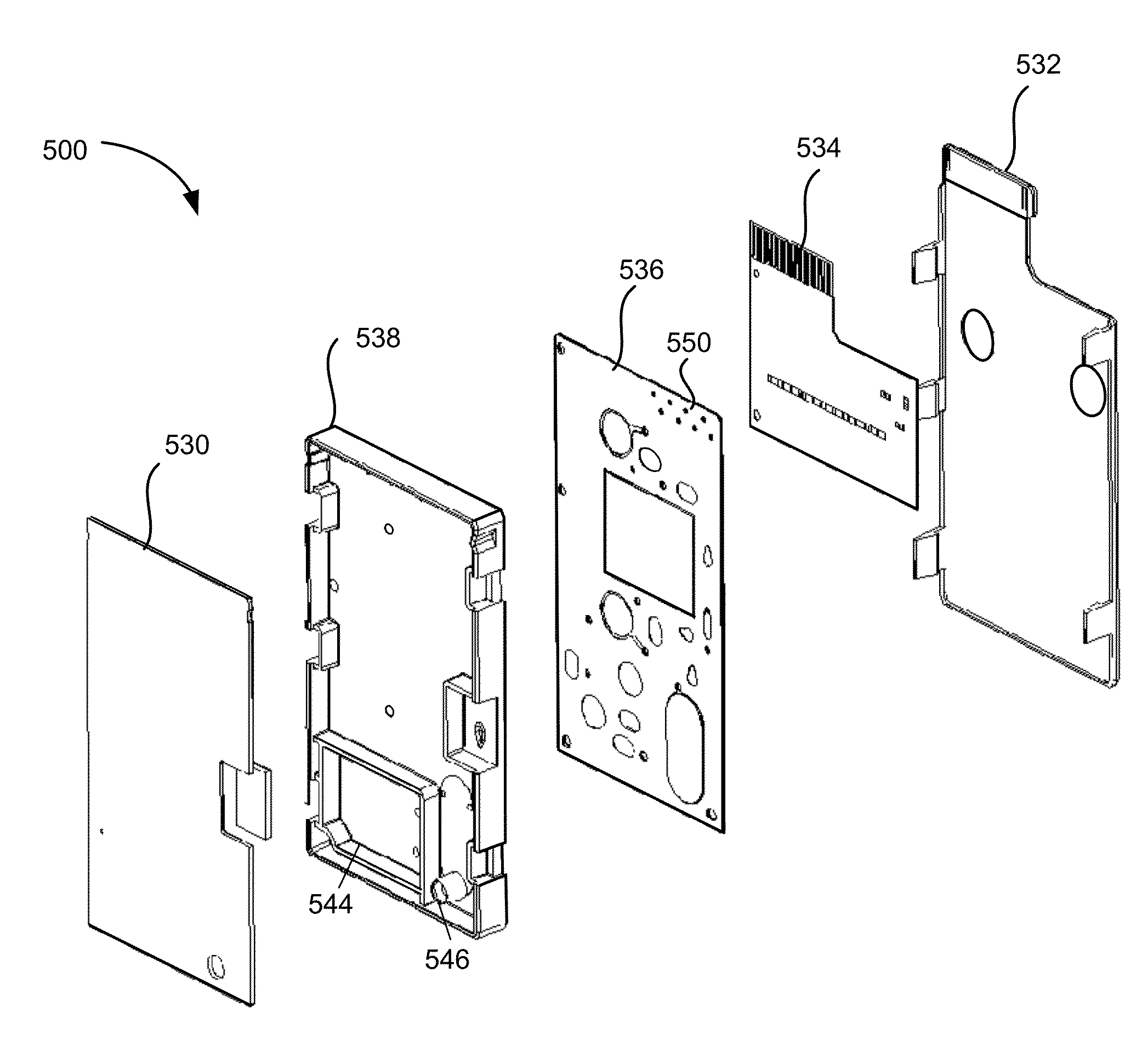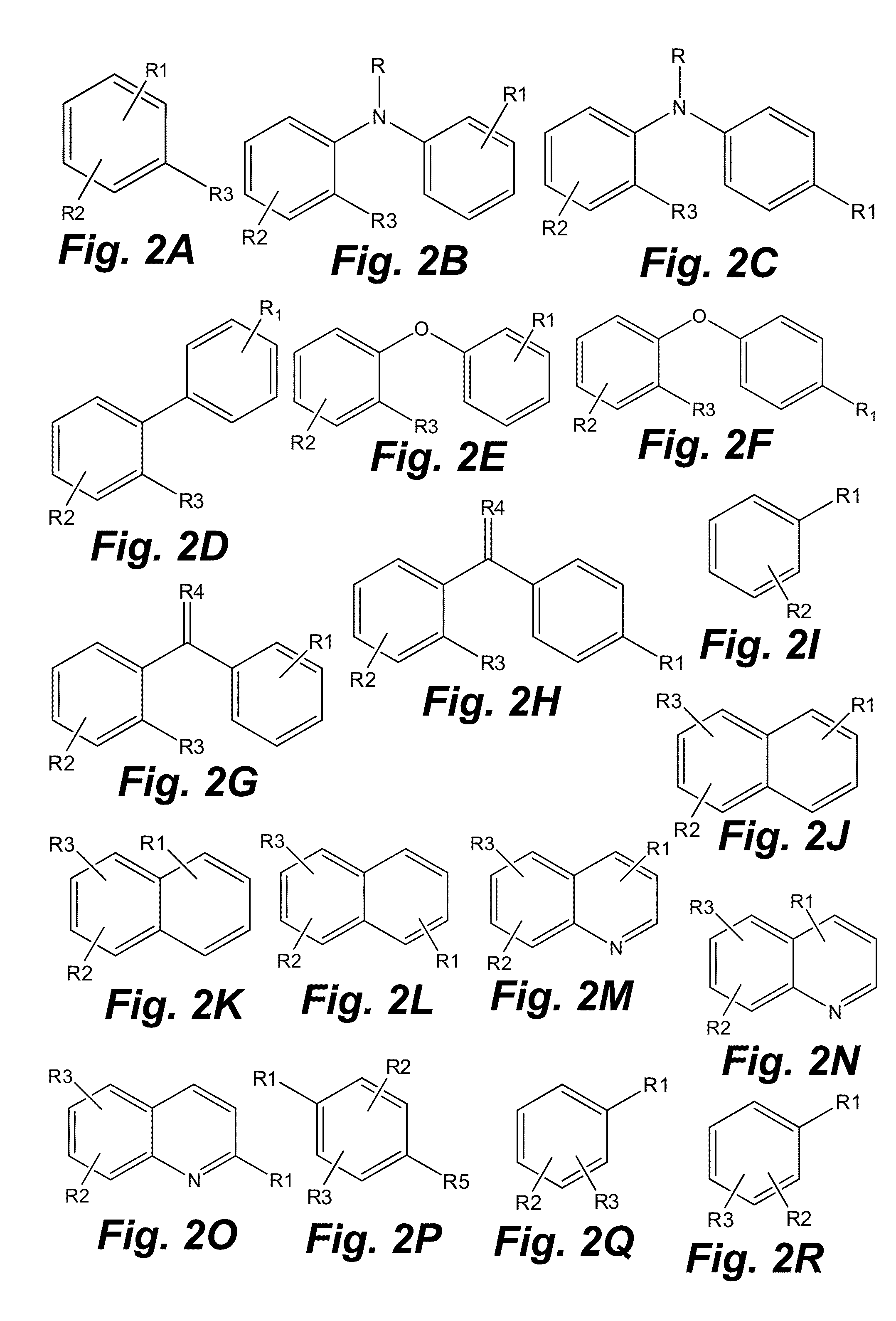Amperometric detection of limulus amebocyte lysate activation by endotoxin and/or 1-3-beta-d-glucan
a technology of amebocyte lysate and amperometric detection, which is applied in the field of amperometric detection methods and substrates, can solve the problems of limited point-of-use processes of conventional industrial and clinical equipment in such contexts
- Summary
- Abstract
- Description
- Claims
- Application Information
AI Technical Summary
Benefits of technology
Problems solved by technology
Method used
Image
Examples
experiment 1
Bound Vs. Free 4-Amino-4′Methoxydiphenylamine
[0102]Amperometric detection of the bound product versus free mediator is conducted by holding a potential constant while the current is measured. A mediator 4-amino-4′-methoxydiphenylamine (p-amino-p-methoxydiphenylamine) is incubated with excess amine-reactive N-hydroxylsuccinimide (NHS) ester-functionalized homobifunctional polyethylene glycol (PEG) to form an amide bond through the free amine of the mediator. The difference in amperometric signal generated from the free mediator (circle) and amidated, or bound, mediator (diamond) is illustrated in FIG. 8A. The diamonds represent current for the bound product, and the circles represent current for the free mediator. As shown, the free mediator is distinguished from the bound product to determine whether the clotting enzyme is present (and thus whether LPS or BG is present). Here, the bound product does not exhibit a signal, whereas the free mediator does.
experiment 2
Bound Vs. Free 4-Amino-2-Chlorophenol
[0103]Amperometric detection of the bound product versus free mediator is conducted by holding a potential constant while the current is measured. A mediator 4-amino-2-chlorophenol is incubated with excess amine-reactive NHS-Ester-functionalized homobifunctional polyethylene glycol (PEG) to form an amide bond through the free amine of the mediator. The difference in amperometric signal generated from the free mediator (circle) and amidated, or bound, mediator (diamond) is illustrated in FIG. 8B. The diamonds represent current for the bound product, and the circles represent current for the free mediator. The free mediator is distinguished from the bound product to determine whether the clotting enzyme is present (and thus whether LPS or BG is present). Here, the bound product does not exhibit a signal, whereas the free mediator does
experiment 3
Full Range of Mediator Detection
[0104]The full range of mediator detection was evaluated for p-amino-p-methoxydiphenylamine (circles) and 4-amino-2-chlorophenol (diamonds). The amperometric ranges of detection are evaluated from a concentration of 0.001 mM to 4 mM. The results showed a range of concentrations for which these mediators exhibit a charge, as shown in FIG. 9. The results indicate that these two mediators are suitable for use in substrates to exhibit a detectable amperometric signal.
PUM
| Property | Measurement | Unit |
|---|---|---|
| temperature | aaaaa | aaaaa |
| temperature | aaaaa | aaaaa |
| temperature | aaaaa | aaaaa |
Abstract
Description
Claims
Application Information
 Login to View More
Login to View More - R&D
- Intellectual Property
- Life Sciences
- Materials
- Tech Scout
- Unparalleled Data Quality
- Higher Quality Content
- 60% Fewer Hallucinations
Browse by: Latest US Patents, China's latest patents, Technical Efficacy Thesaurus, Application Domain, Technology Topic, Popular Technical Reports.
© 2025 PatSnap. All rights reserved.Legal|Privacy policy|Modern Slavery Act Transparency Statement|Sitemap|About US| Contact US: help@patsnap.com



